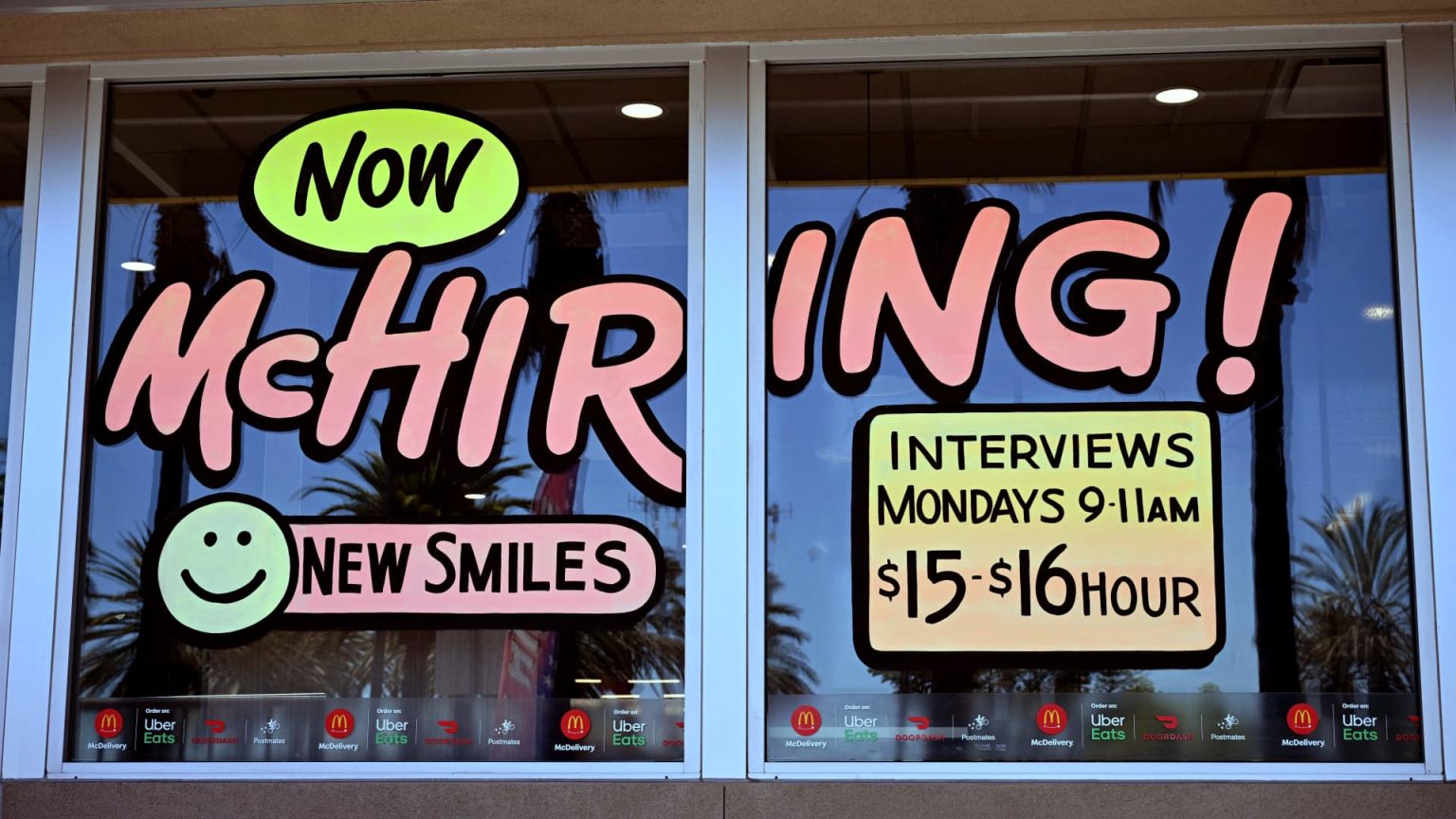A hiring sign is pictured at a McDonald’s restaurant in Garden Grove, California on July 8, 2022.
Robyn Beck | Afp | Getty Images
This report is from today’s CNBC Daily Open, our new, international markets newsletter. CNBC Daily Open brings investors up to speed on everything they need to know, no matter where they are. Like what you see? You can subscribe here.
What you need to know today
More jobs but higher unemployment
U.S. nonfarm payrolls for August increased by 187,000, above the 170,000 estimate. However, the unemployment rate jumped from 3.5% last month to 3.8%, the highest since February 2022. Average hourly earnings increased 4.3% year on year, below the forecast of 4.4%. Combined with the downwardly revised figures for June and July, those are clear signs the U.S. jobs market is slowing.
Positive outlook for markets
U.S. stocks cheered the moderate jobs report and mostly inched up Friday, giving major indexes their best week in months. Asia-Pacific markets rose Monday, with Hong Kong’s Hang Seng index popping as much as 2.6%. That’s thanks to Hong Kong-listed property stocks, which surged after creditors allowed Country Garden Holdings to delay payment for an onshore bond.
Electric vehicle moves
Tesla shares slid 5% Friday after the company cut prices on its electric vehicles in both the U.S. and China. Meanwhile in Germany, BMW and Mercedes revealed EV concepts, representing their biggest push yet into the EV market. But that might not be enough to stop China’s dominance. Chinese EV companies all delivered enough vehicles in August to keep pace with their third-quarter guidance.
JPMorgan Chase and Jeffrey Epstein
JPMorgan Chase notified the U.S. Treasury Department of more than $1 billion in transactions related to “human trafficking” by Jeffrey Epstein, a lawyer for the U.S. Virgin Islands told a federal judge. Those transactions dated back 16 years and were only reported after Epstein was arrested and killed himself in jail in 2019, said Mimi Liu, an attorney for the Virgin Islands.
[PRO] Slow start to September
U.S. markets are closed Monday for Labor Day and economic data coming out this week is on the light side. The heavy hitters, like the consumer and producer price indexes, will only be released later in the month. So keep an eye out for these signs that will indicate whether stocks will fall prey to the September seasonality — the month’s historically been the weakest for stocks.
The bottom line
The U.S. economy added more jobs than expected in August, but the overall unemployment rate rose. This may sound counterintuitive since it’s natural to assume an increase in the number of jobs will lead unemployment going down. But there’s a simple explanation for that.
By definition, the unemployment rate is the number of unemployed people (people without a job but are actively looking for one), divided by the labor force (the sum of people both employed and unemployed), expressed as a percentage.
If the unemployment rate goes up, that means the proportion of people looking for a job compared with the total labor force has grown. That’s straightforward enough. For the unemployment rate to go up even as there were 187,000 more jobs in August means there were more people who started looking for a job than people who secured one. The implication: The total labor force grew in August. Indeed, 597,000 people without work experience sought employment last month, according to the report.
A growing labor force is a looser jobs market. That probably contributed to the lower-than-expected wage growth last month. As Bank of America U.S. economist Stephen Juneau wrote, “The broad message here seems to be that we are nearing full employment, with supply and demand coming more into balance.”
That will come as a relief to Federal Reserve officials worried about a hot jobs market contributing to inflation. Investors, too, cheered the jobs report. They think there’s a 93% chance the Fed will keep rates unchanged at its September meeting and a 65.3% chance at its November meeting, according to the CME FedWatch Tool. That’s up from 80% and 44.5% a week ago, respectively.
Major indexes rose in response to the jobs report as well. The S&P 500 climbed 0.18% Friday, giving it a 2.5% increase for the week — its best weekly performance since June. The Dow Jones Industrial Average added 0.33% to close 1.4% higher for the week. The Nasdaq Composite was essentially flat, but ended the week up 3.3%. That was both indexes’ best showing since July.
U.S. markets are closed today, so we’ll have to wait to see if they can sustain this momentum and defy September’s reputation as the worst month for stocks.
— CNBC’s Jeff Cox contributed to this report
Read the full article here




